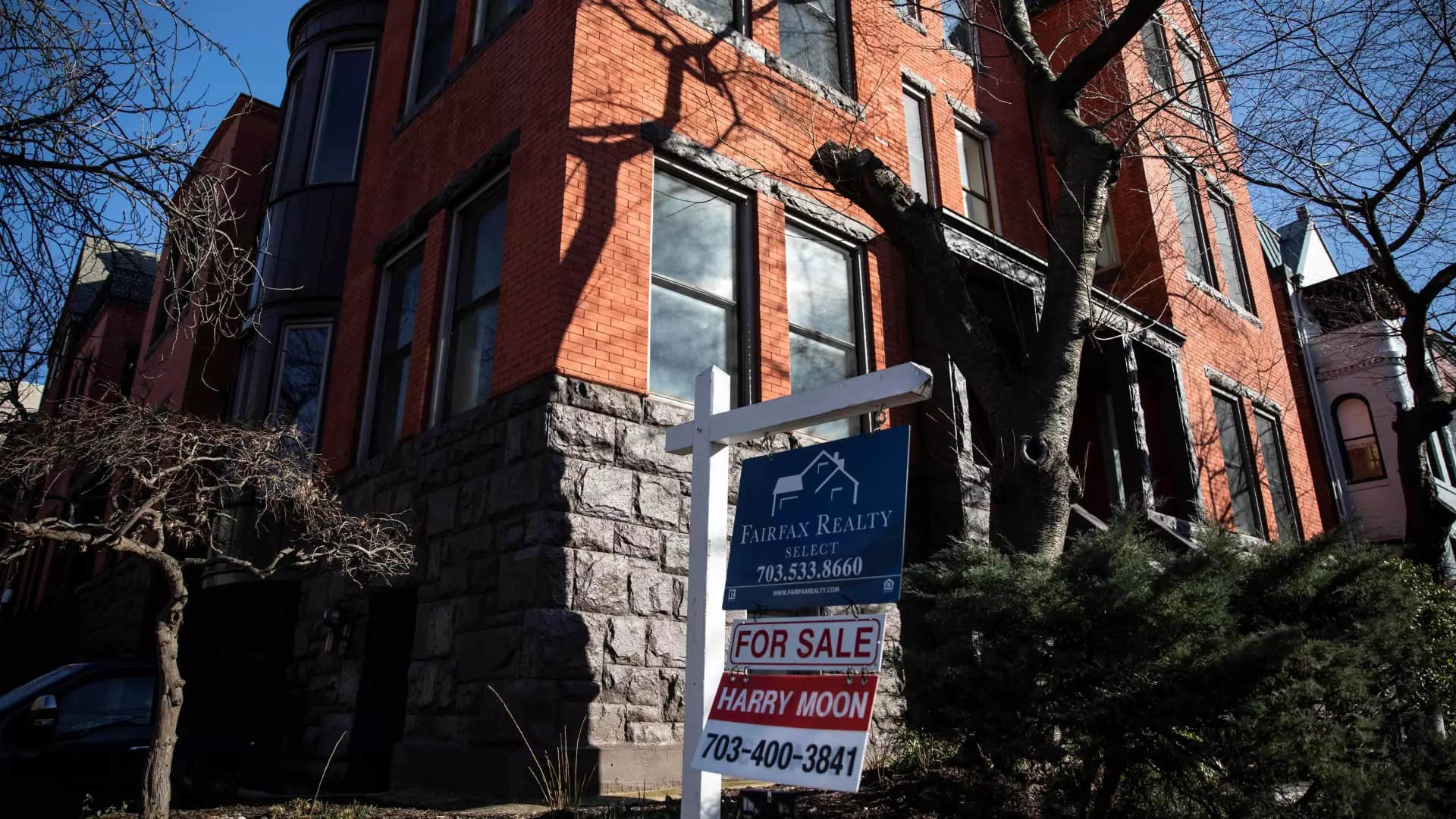The housing market in the Washington, D.C. metropolitan area is experiencing a remarkable, albeit concerning, surge in inventory that defies the usual seasonal patterns. Typically, as spring approaches, one would expect a natural uptick in properties for sale. However, the 56% year-over-year boost in listings observed recently raises eyebrows and prompts us to question the underlying conditions fueling such rapid changes. When examining these statistics, it becomes apparent that this spike is not solely a product of more homeowners choosing to sell; it reflects a complex interplay of economic anxieties rather than merely typical market dynamics.
Normally considered a fortified bastion of stability, the D.C. market now demonstrates vulnerability shaped by external economic pressures, notably the repercussions of federal layoffs and budget cuts. As homes linger on the market due to hesitance from potential buyers, the pulse of the community reveals a shaky sense of security, wherein families hesitate to embark on new real estate ventures. This pattern hints at broader issues that might plague markets in other areas reliant on federal employment, revealing a ripple effect that could extend far beyond the capital’s borders.
Impact of Economic Uncertainty on Inventory Trends
Recent data from Realtor.com indicates that D.C. has seen not just a rise in listings but also a significant alteration in buyer behavior. While new listings were indeed 24% higher than last year, this increase falls short in matching the higher inventory levels, suggesting that fewer buyers are competing for available homes. It becomes clear that the anxiety surrounding job security in the federal workforce has influenced the timing and priorities for many prospective buyers.
Whereas a typical uptick in spring home sales is often reflective of optimism and growing job stability, the current market displays an ambiguous narrative. Federal layoffs and funding cuts often bring about an era of uncertainty where potential buyers hesitate to make significant moves, causing a stark divergence in expectations for both sellers and potential homeowners. This means the inventory increase might appear beneficial on the surface but likely masks larger economic distress within the community.
The Role of New Construction in the Current Landscape
To complicate matters further, there has been a noticeable increase in the number of new condominiums and townhomes entering the market—a shift towards lower-end properties not seen in prior years. Though it can be argued that the rise of new constructions contributes positively to inventory levels, the type of housing being produced is crucially important. By tilting towards condos and townhomes, there is a risk of oversaturation in lower-priced segments, potentially leading to diminished profit margins for sellers.
For prospective homeowners, the diversity of options might seem appealing, yet the declining median list prices—down 1.6% year-over-year—indicate that the market’s health is more fragile than it appears. While a decrease in prices might create a more favorable purchasing environment for buyers, these figures signal worry that the overall housing environment is under stress, contradicting the vitality one typically expects from a bustling capital city.
Repercussions for Future Housing Market Dynamics
As we plunge deeper into the implications of this shift, the question that remains is how long this can sustain itself without significant economic repercussions. A rising inventory suggests that the market is adjusting, but not necessarily in a way that reflects growth or opportunity. The fact that buyer activity is waning indicates a growing number of individuals wary about their financial futures—an unwelcoming sentiment that can spiral and affect market conditions for months to come.
This precarious situation serves as a cautionary tale for other markets with significant federal employment. D.C. may be the epicenter of these changes, yet as similar patterns emerge in other metropolitan areas, the ramifications for homeowners, prospective buyers, and the broader economy could be profound. While some might cling to the stock of listings as a boon for buyers, it is imperative that the lessons learned from D.C.’s current housing landscape reverberate throughout the nation—echoing the complexities of supply, demand, and economic confidence amidst uncertainty.

